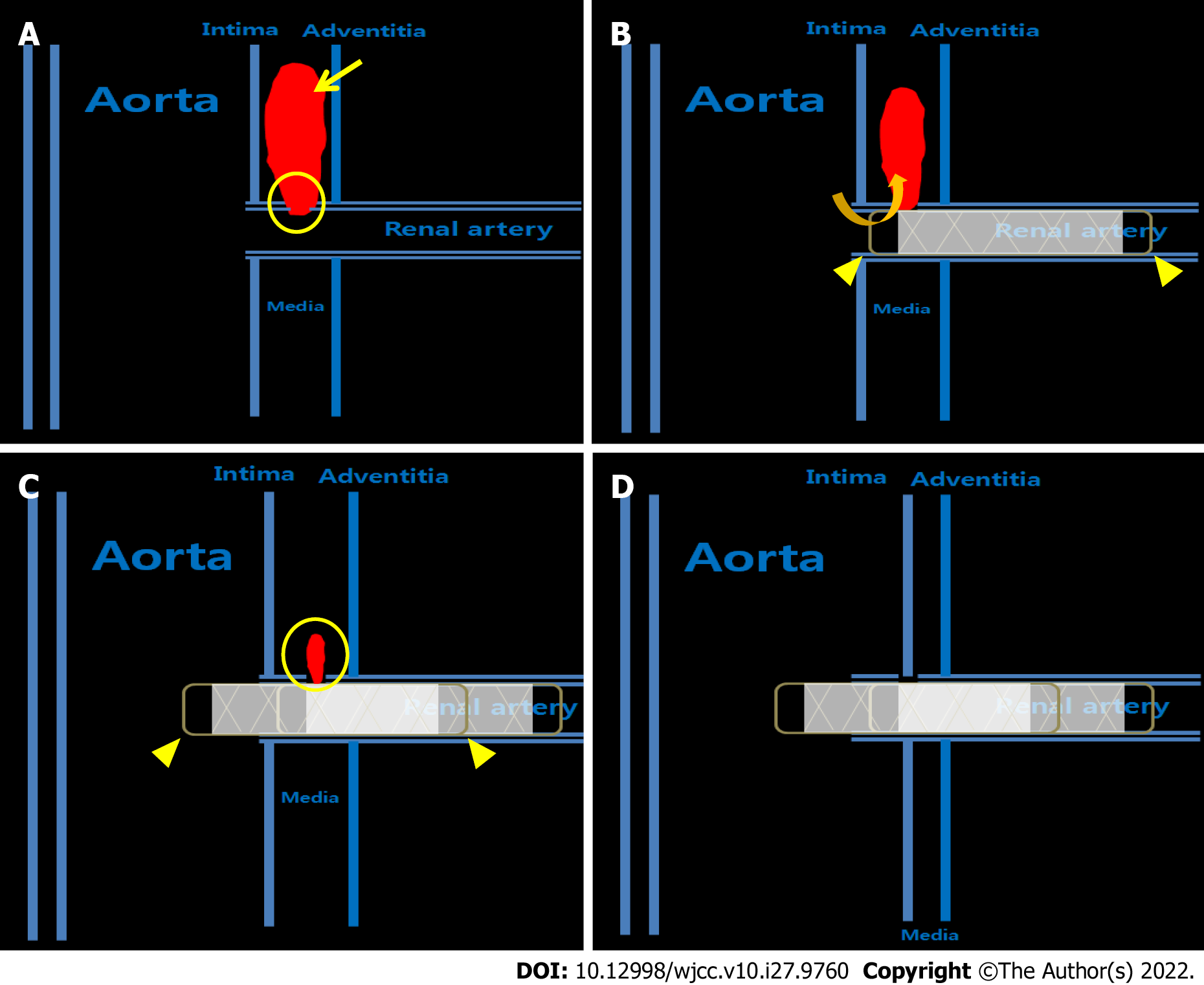Copyright
©The Author(s) 2022.
World J Clin Cases. Sep 26, 2022; 10(27): 9760-9767
Published online Sep 26, 2022. doi: 10.12998/wjcc.v10.i27.9760
Published online Sep 26, 2022. doi: 10.12998/wjcc.v10.i27.9760
Figure 4 Two-dimensional illustration of the treatment process for aortic intramural hematoma associated with a pseudoaneurysm arising from the renal artery after blunt trauma using covered stents.
A: The intimomedial tear (yellow circle) of the proximal renal artery occurs first by trauma, leading to intramural blood collection, and finally within the intramural hematoma (yellow asterisk). This intramural blood collection is defined as a pseudoaneurysm (yellow arrow); B: Although the size of the pseudoaneurysm appeared to decrease after the deployment of the stent graft, a large blood pool was still present due to the endoleak caused by the residual blood flow (orange angled arrow) through the space between the uncovered area of the stent graft (yellow arrowhead) and intimomedial flap; C: The intramural blood collection (yellow circle) was markedly decreased in size and extent after installing an additional stent graft (yellow arrowhead); D: The intramural blood collection and hematoma completely disappeared seven months after the second session.
- Citation: Kim Y, Lee JY, Lee JS, Ye JB, Kim SH, Sul YH, Yoon SY, Choi JH, Choi H. Endovascular treatment of traumatic renal artery pseudoaneurysm with a Stanford type A intramural haematoma: A case report. World J Clin Cases 2022; 10(27): 9760-9767
- URL: https://www.wjgnet.com/2307-8960/full/v10/i27/9760.htm
- DOI: https://dx.doi.org/10.12998/wjcc.v10.i27.9760









